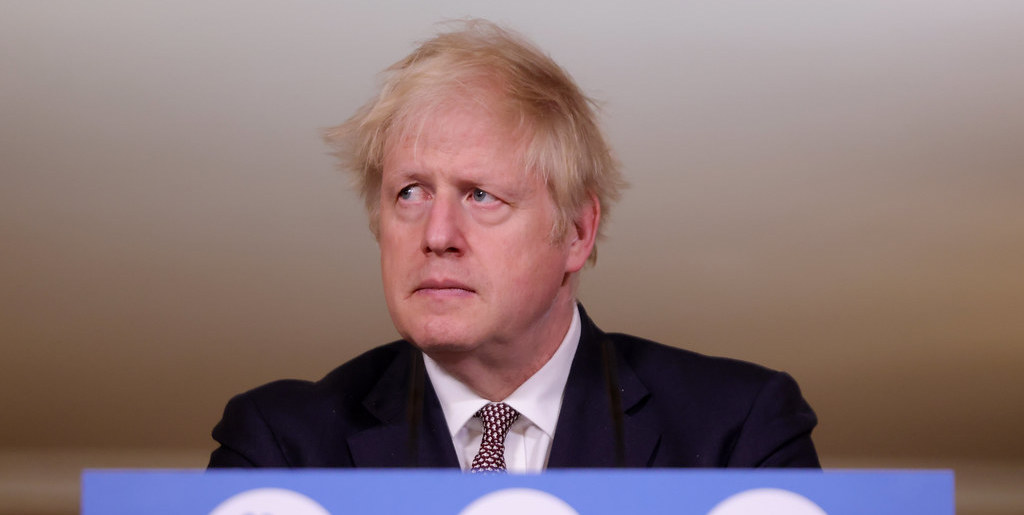The Prime Minister is under significant pressure after revelations about parties being held at Number 10 during the strict Covid-19 lockdown last year.
Numerous calls have been made for Boris Johnson to step down, and Cabinet Office civil servant Sue Gray has launched an inquiry into the parties. Her report is due to be released next week and it is expected to have a significant bearing on the Prime Minister’s future.
But should Johnson’s time in charge be coming to an end, what is the process for a prime minister leaving office?
Ferret Fact Service explains how a prime minister’s tenure could be ended.

How can a prime minister lose their position?
Defeated at an election
If a prime minister’s (PM) party loses a general election, it is expected they will offer their resignation and allow the new largest party, or parties, to select a new PM. If there is a hung parliament (where no party gains a majority of seats) there can be some negotiation over who makes up the new government, with the incumbent PM having first shot at trying to form a government.
This occured in 2010 after Labour lost its place as the largest party to the Conservatives, who failed to gain a majority. Ultimately the Liberal Democrats and the Conservatives formed the coalition government which lasted for five years.
Resignation
Should a prime minister decide they want or need to step down from their post between elections, it is for the party or parties who form the government to decide on a successor.
It is generally accepted that the leader of the largest party in the House of Commons becomes the PM. As long as that party remains the largest, it is effectively up to it to choose a successor. So in the event that Boris Johnson resigns, a Conservative party leadership election could follow, with its winner becoming prime minister. This is how Boris Johnson became Prime Minister in 2019 after he defeated Jeremy Hunt in a leadership contest.
Both David Cameron and his successor Theresa May resigned their positions between elections, Cameron after Britain voted to leave the EU and May after her draft EU withdrawal bill was rejected by MPs.
The convention is that a resigning prime minister will stay in place until a successor has been selected, after which they will offer their resignation to the Queen. It is possible to resign immediately and advise the Queen to appoint another MP until a leadership contest has been run, but this is unprecedented in modern times.
It is also possible, though unlikely, that the Queen could turn to the opposition to test if they have the support of the House Of Commons should no obvious replacement be decided on by the incumbent party. The Queen’s role here is largely ceremonial as there is a longstanding convention that the monarch should be kept away from politics.
Removed by party
The process of being removed as prime minister is different depending on the political party which forms the government.
For the Conservative Party, the process of removing a leader starts with gathering support for a No Confidence vote of party MPs. This happens when 15 per cent of MPs (54 MPs) write to the chair of the Tory committee that represents backbench MPs, which is known as the 1922 committee. The chair then arranges a vote of MPs, who vote in support or against the leader. If more than 50 per cent of MPs back the current leader, then they can remain in position and another vote cannot be triggered for a year.
Should the leader lose the vote they are unable to stand again this will lead to a leadership contest This is ultimately voted on by party members.
For Labour leaders, a challenger must be nominated by at least 20 per cent of MPs, which then triggers a leadership contest. MPs can hold a No Confidence vote against a Labour leader (as with Jeremy Corbyn in 2016) but it has no formal standing and the leader can continue.
The resulting election is voted on by Labour members, registered supporters and affiliated supporters. This is a ‘one member, one vote’ system which means each Labour member has the same voting power as a member of the parliamentary Labour party (an MP).
Dies in office
If a prime minister was to pass away while still holding office, or become incapable of continuing in the role due to ill-health it is technically up to Parliament to select a person who has its confidence and recommend them to the monarch who would then officially appoint them.
However, according to some academics, the role of prime minister has become “increasingly presidential”, with the leader drawing power from outside parliament as well as in, so it is possible that an interim prime minister could be chosen in order to allow for a ballot of ruling party members.
The last PM to die in office was Lord Palmerston in 1865, so it is not clear exactly how MPs would respond in modern times.
Impeachment
There is technically a procedure for impeaching MPs including the prime minister, but according to parliament “for all practical purposes the procedure of impeachment is obsolete”. This is backed up by a 1999 report from the Joint Committee on Parliamentary Privilege which stated that “the circumstances in which impeachment has taken place are now so remote from the present that the procedure may be considered obsolete”.
Ferret Fact Service (FFS) is a non-partisan fact checker, and signatory to the International Fact-Checking Network fact-checkers’ code of principles.
All the sources used in our checks are publicly available and the FFS fact-checking methodology can be viewed here.
Want to suggest a fact check?
Email us at factcheck@theferret.scot or join our Facebook group.
Photo Credit: Creative Commons














